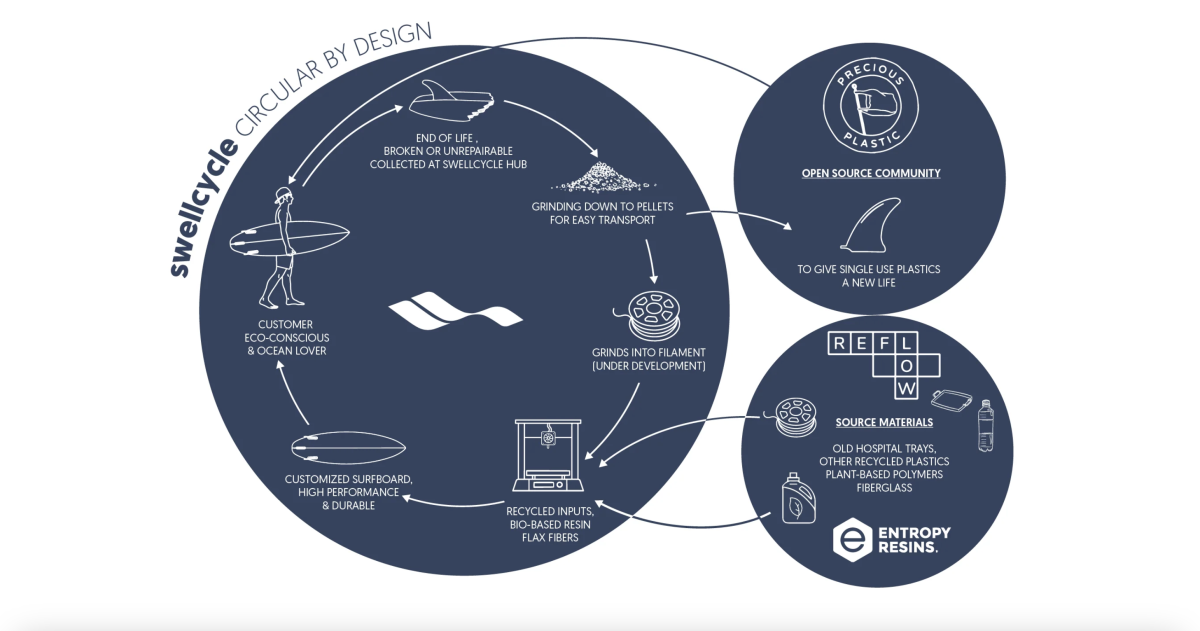Let’s face it: Surfboards are not environmentally friendly. Neither Polyurethane or EPS foam breaks down, and snapped and old surfboards typically end up in the landfills. Not to mention the piles of useless scraps that get discarded during the shaping process.
While the surfboard industry is focused on moving towards more sustainable practices, there’s only so much you can do when the polyurethane surfboard is still the gold standard for performance surfing.
Enter Swellcycle.
A Santa Cruz-based company started by Patricio Guerrero, Swellcycle is 3D-printing surfboards out of “hospital trays, other recycled plastics, plant based polymers, and fiberglass.”

Swellcycle
How does it work? Basically, by using clear, recycled plastic filament, Swellcycle’s 3D printer can turn a digital file into a three dimensional surfboard in a matter of hours— similar to the way a CNC machine shapes a foam blank. The end product is hollow and translucent, but otherwise looks like a normal surfboard.
The more important question is: Do they actually work?
A quick scroll through Swellcycle’s Instagram and you’ll find surfers trying them out at Steamer Lane. Their shapes (at least so far), appear to be mostly twin fins and logs, and they definitely perform. It’s certainly a trip watching a hollow surfboard glow green and orange in the evening sun.
While it’s going to be a long time before we see a 3D-printed, hollow surfboard ridden on the Championship Tour, consider shapers like the legendary Bob Pearson of Pearson-Arrow surfboards in Santa Cruz a believer in what Guerrero and Swellcycle are doing: “I was one of the first guys to have these [CNC machine] in the world, and I got all kinds of crap for having a CNC machine because people didn’t know what the hell it was,” Pearson told KQED. “[They said] it takes a soul out of it, and everyone was badmouthing it. And it’s amazing how many people who were badmouthing it now are utilizing them.”
Could a 3D printer one day replace the CNC machine? Doubtful. After all, as much as surfboard technology changes, it also stays the same. The PU surfboard has been around since the 1950s, and it’s still winning world titles today. That won’t change anytime soon.
Still, Swellcycle could have a bright future. It’s a rad concept, it’s environmentally conscious, and surely the tech and performance will evolve over time. Plus, it’s not like every surfer needs a board to perform at the CT level. In fact, only 50 people in the entire world actually do.
So if Swellcycle can work for the masses, it could be a massive, sustainable success.

